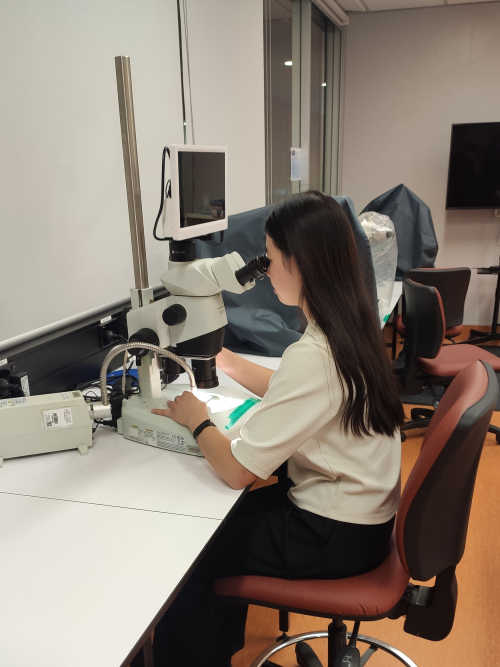
Deep Sea Changes Uncovered by Microscopic Fossils

University of Auckland Masters student, Natasha Ngadi, used microscopic fossils to uncover new insights about the ocean around the Hikurangi Subduction Zone, over the last 1.3 million years.
Utilizing sediment cores from the International Ocean Discovery Program (IODP), Ngadi used benthic foraminifera, grain size, and geochemistry techniques to understand changes in the deep sea water masses and examine the origin of sediments found in the core, taken from the Tūranganui Knoll seamount, offshore Tairāwhiti.
Benthic foraminifera are microscopic, single-celled organisms living on the sea floor. They are so diverse that the species vary across water depth, location, climate, and through time, as a result, the species of foraminifera found in sediment say a lot about where it came from, when, and the oceanic conditions they lived in.
“It’s amazing how much you can learn studying foraminifera” said Ngadi “it’s exciting to get results and start thinking of what might explain the changes we’re seeing”.
Using foraminifera as a proxy, Ngadi was able to investigate differences in past ocean conditions across the last 1.3 million years and explore the changes between glacial (ice age) and interglacial periods.
This research is part of a larger Marsden funded project, led by University of Auckland researcher Dr Lorna Strachan, investigating a link between climate, sea level, and earthquake and volcanic activity.
“It was unexpected that we found during glacial periods, Pacific Deep Water dominates which is cool, highly nutrient rich, older, and lower in oxygen” said Ngadi, “whereas interglacial periods are dominated by Lower Circumpolar Deep Water which is colder, less nutrient rich, younger, and more oxygen rich.” Indicating that during the warmer interglacial periods, the amount of cold water flowing from the Southern Ocean increases.
Grain size findings suggest that the Northern Hikurangi Subduction Margin is outside of the Deep Western Boundary Current’s flow path. The Deep Western Boundary Current is the major water current that transports deep waters northwards from the Southern Ocean, which has generally been found to change in strength over glacial and interglacial periods.
28 May 2024
Disclaimers and Copyright
While every endeavour has been taken by the East Coast Lab Hikurangi Subduction Zone M9 to ensure that the information on this website is
accurate and up to date, East Coast Lab Hikurangi Subduction Zone M9 shall not be liable for any loss suffered through the use, directly or indirectly, of information on this website. Information contained has been assembled in good faith.
Some of the information available in this site is from the New Zealand Public domain and supplied by relevant
government agencies. East Coast Lab Hikurangi Subduction Zone M9 cannot accept any liability for its accuracy or content.
Portions of the information and material on this site, including data, pages, documents, online
graphics and images are protected by copyright, unless specifically notified to the contrary. Externally sourced
information or material is copyright to the respective provider.
© East Coast Lab Hikurangi Subduction Zone M9 - www.eastcoastlab.org.nz / +64 6 835 9200 / info@eastcoastlab.org.nz
